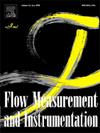小型液体机械密封泄漏流量测量及表面形貌实验研究
IF 2.7
3区 工程技术
Q2 ENGINEERING, MECHANICAL
引用次数: 0
摘要
本文对小型液体机械密封的流体泄漏行为进行了实验研究,重点研究了受控条件下的精确泄漏流特性。开发了先进的实验平台来模拟真实的操作条件,包括不同的压力和转速,从而能够准确评估机械密封中的流体输送机制。调查涉及两种密封的详细泄漏流量测量和表面粗糙度特征:一种是磨损的密封(工业使用3000小时),另一种是新的、未使用的密封。使用容积收集方法测量泄漏流量,以捕获受控压力(高达12 bar)和转速条件(高达6000 rpm)下的流量变化。使用AltiSurf 500轮廓仪进行非接触式表面粗糙度分析,提供1D, 2D粗糙度轮廓和3D表面重建。结果表明,磨损后的密封平均粗糙度(Ra = 0.08928 ~ 0.1397 μm)低于新密封(Ra = 0.1203 ~ 0.2023 μm)。尽管表面光滑,但峰度(Rku)分析显示,磨损密封的峰值锐度(Rku = 13.7611)高于新密封(Rku = 6.5860),表明长时间运行磨损引起的局部表面峰值。泄漏流量测量显示出明显的趋势。在恒压差为4 bar时,磨损的密封在转速低于3000 rpm时表现出不稳定的泄漏流量,但在高于该阈值的12.0 mL/h(±0.5 mL/h)时稳定。在等速条件下(4000转/分),低压差(1 bar)时泄漏量最小,但超过5 bar时泄漏量显著增加,标志着泄漏机制的转变。新密封在所有条件下都表现出最小的泄漏,突出了表面演化与泄漏特征之间的强相关性。这些发现为泄漏流量测量技术提供了有价值的见解,并揭示了表面形貌变化对机械密封中流体输送的影响。研究结果有助于改进测量方法,并为优化航空航天应用中的密封设计提供指导。本文章由计算机程序翻译,如有差异,请以英文原文为准。

Experimental investigation of leakage flow measurement and surface morphology in small-scale liquid mechanical seals
This study presents an experimental investigation into the fluid leakage behavior of small-scale liquid mechanical seals, with a focus on precise leakage flow characterization under controlled conditions. An advanced experimental platform was developed to simulate realistic operating conditions, including varying pressures and rotational speeds, enabling accurate assessment of fluid transport mechanisms in mechanical seals. The investigation involved detailed leakage flow rate measurements and surface roughness characterization for two types of seals: a worn seal (3000 h of industrial use) and a new, unused seal. Leakage flow rates were measured using a volumetric collection method to capture flow variations under controlled pressure (up to 12 bars) and rotational speed conditions (up to 6000 rpm). Non-contact surface roughness analysis was conducted using the AltiSurf 500 profilometer, providing 1D, 2D roughness profiles, and 3D surface reconstructions. Results indicate that the worn seal exhibited a lower average roughness (Ra = 0.08928–0.1397 m) compared to the new seal (Ra = 0.1203–0.2023 m). Despite this smoother surface, kurtosis (Rku) analysis revealed higher peak sharpness in the worn seal (Rku = 13.7611) versus the new seal (Rku = 6.5860), indicating localized surface peaks induced by prolonged operational wear. Leakage flow rate measurements revealed distinct trends. At a constant differential pressure of 4 bars, the worn seal exhibited unstable leakage flow at rotational speeds below 3000 rpm but stabilized at 12.0 mL/h (±0.5 mL/h) above this threshold. Under constant speed conditions (4000 rpm), leakage remained minimal at low pressure differentials (1 bar) but increased significantly beyond 5 bars, marking a transition in leakage mechanisms. The new seal exhibited minimal leakage under all conditions, highlighting the strong correlation between surface evolution and leakage characteristics. These findings provide valuable insights into leakage flow measurement techniques and reveal the influence of surface morphology changes on fluid transport in mechanical seals. The results contribute to improved measurement methodologies and provide guidance for optimizing seal design in aerospace applications.
求助全文
通过发布文献求助,成功后即可免费获取论文全文。
去求助
来源期刊

Flow Measurement and Instrumentation
工程技术-工程:机械
CiteScore
4.30
自引率
13.60%
发文量
123
审稿时长
6 months
期刊介绍:
Flow Measurement and Instrumentation is dedicated to disseminating the latest research results on all aspects of flow measurement, in both closed conduits and open channels. The design of flow measurement systems involves a wide variety of multidisciplinary activities including modelling the flow sensor, the fluid flow and the sensor/fluid interactions through the use of computation techniques; the development of advanced transducer systems and their associated signal processing and the laboratory and field assessment of the overall system under ideal and disturbed conditions.
FMI is the essential forum for critical information exchange, and contributions are particularly encouraged in the following areas of interest:
Modelling: the application of mathematical and computational modelling to the interaction of fluid dynamics with flowmeters, including flowmeter behaviour, improved flowmeter design and installation problems. Application of CAD/CAE techniques to flowmeter modelling are eligible.
Design and development: the detailed design of the flowmeter head and/or signal processing aspects of novel flowmeters. Emphasis is given to papers identifying new sensor configurations, multisensor flow measurement systems, non-intrusive flow metering techniques and the application of microelectronic techniques in smart or intelligent systems.
Calibration techniques: including descriptions of new or existing calibration facilities and techniques, calibration data from different flowmeter types, and calibration intercomparison data from different laboratories.
Installation effect data: dealing with the effects of non-ideal flow conditions on flowmeters. Papers combining a theoretical understanding of flowmeter behaviour with experimental work are particularly welcome.
 求助内容:
求助内容: 应助结果提醒方式:
应助结果提醒方式:


